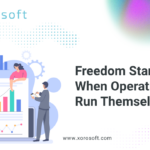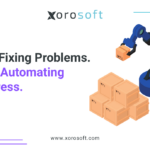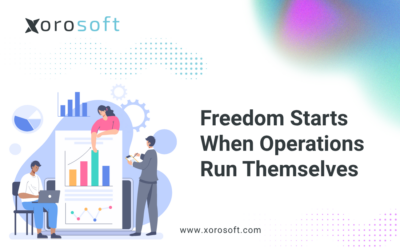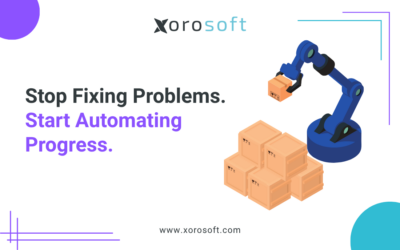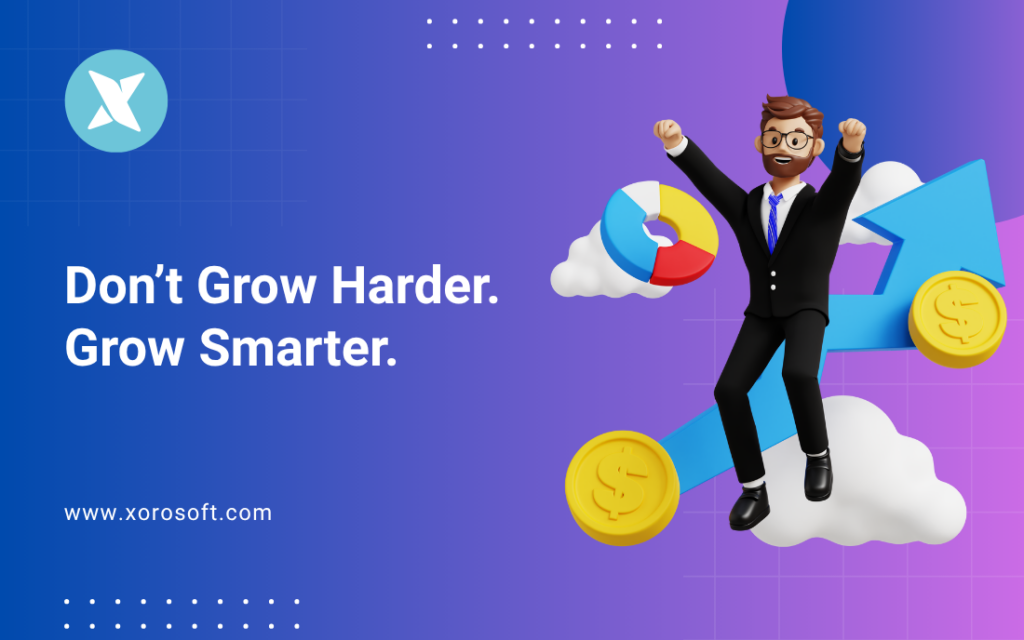
Retail ERP Software: Grow Smarter, Not Harder
Running a modern DTC brand once felt simple. You launched, fulfilled, and grew. Now channels multiply, SKUs expand, and data spreads across too many tools. The work shifts from growth to keeping the wheels turning. That’s why more brands turn to retail ERP software — a platform that connects every channel, simplifies operations, and helps them grow smarter.
You want freedom to build the brand, test new offers, and deepen customer loyalty. Retail ERP software helps you reclaim that focus. It unifies orders, inventory, purchasing, and accounting so your team spends less time firefighting and more time scaling. As a result, you protect margins while improving customer experience. In addition, visibility improves across every department.
Why Growth Feels Harder Without Retail ERP Software
As your brand scales, complexity creeps in from every direction. For example, you add marketplaces, 3PLs, and wholesale accounts. Each addition fragments your data. Consequently, leaders lose the clear visibility needed for fast decisions. You feel the drag in daily work and in the numbers. Meanwhile, customers expect faster, error-free delivery. In short, the more you grow, the harder it becomes to manage operations manually.
-
Tool sprawl: Multiple systems track orders, inventory, and accounting — rarely in sync.
-
Manual reconciliation: Teams spend hours cleaning CSVs instead of improving throughput.
-
Poor visibility: Inventory snapshots lag, and forecasts rely on guesswork.
-
Fulfillment drag: Wrong picks and misrouted orders erode trust and raise costs.
-
Cash drag: Excess stock ties up capital while stockouts steal revenue.
None of these frictions are inevitable. However, they persist until you consolidate your operational core. Retail ERP software fixes them at the source by giving you a single, reliable record of truth. Therefore, teams move faster and errors drop. Ultimately, efficiency becomes your competitive edge. Furthermore, clarity in your data allows smarter scaling decisions.
The Metrics That Signal Smarter Growth
When the right operational foundation clicks, the metrics tell the story. In many cases, processes tighten, teams move faster, and leaders gain clarity. Customers feel the difference, and the business frees time and cash for growth. Moreover, the benefits reinforce each other over time. In turn, your operations become a growth engine rather than a cost center. Additionally, everyone on the team benefits from better alignment.
| Metric | Before | After | Gain |
|---|---|---|---|
| Pick accuracy | 91% | 99.6% | +8.6 pts |
| Order cycle time | 48 hrs | 12 hrs | 4× faster |
| On-time delivery | 88% | 98% | +10 pts |
| Cash conversion cycle | 74 days | 51 days | −23 days |
| Fulfillment cost/order | $7.80 | $5.10 | −35% |
These gains compound. As a result, customers get products faster, fewer returns occur, and your team’s workload lightens. In addition, real-time visibility reduces inventory waste and frees up working capital. Consequently, you can reinvest savings into growth. Altogether, your business becomes leaner and more resilient.
A Mini Case: Faster Cycles, Stronger Cash
A beverage brand grew to $5M ARR on Shopify. They expanded to Amazon and partnered with a 3PL. Success brought strain. Orders lived in Shopify, accounting sat in QuickBooks, and warehouse tasks ran separately. Consequently, double entry slowed fulfillment and skewed inventory. Eventually, the team reached a breaking point.
The company implemented retail ERP software that tied sales channels, purchasing, and fulfillment together. They unified product data. In addition, they synced POs and invoices automatically and exposed live inventory to their 3PL. Then, within 60 days, order cycle time dropped by 75%. On-time delivery rose by ten points. The cash conversion cycle improved by three weeks. Because of this, the team shifted focus from spreadsheets to campaign testing and channel growth. Ultimately, the system paid for itself through speed and accuracy. Therefore, operational chaos turned into controlled scale.
A Playbook to Streamline Operations
You don’t need an overhaul on day one. Instead, tackle the highest-leverage steps first. This playbook works for most DTC and omnichannel brands. Then, iterate monthly as results come in. Step by step, each improvement multiplies the next. Finally, consistency compounds into advantage.
Unify Your Data
Goal: Create one source of truth for orders, inventory, purchasing, and accounting.
Action: Connect Shopify, marketplaces, your 3PL, and finance tools to a single ERP platform.
Metric: Time to close monthly books ↓ 50%.
Because of this, decisions become faster and reports stay accurate. Furthermore, fewer handoffs reduce data errors. Likewise, collaboration improves across departments.
Automate Routine Work
Goal: Reduce manual touches and errors.
Action: Automate order routing, restock alerts, and PO creation.
Metric: Manual touches per order ↓ 80%.
As a result, the team can focus on customers instead of admin work. Additionally, automation keeps fulfillment consistent across channels. Equally important, it reduces stress and saves time.
Improve Forecasting and Replenishment
Goal: Hold less inventory while avoiding stockouts.
Action: Use sales velocity and seasonality to set dynamic reorder points.
Metric: Stockouts ↓ 60%, inventory turnover ↑ 25%.
Therefore, working capital stays available for growth projects. At the same time, customer satisfaction improves. Moreover, predictable restocking prevents cash drain.
Align Warehousing and 3PLs
Goal: Ship faster with fewer mistakes.
Action: Provide live dashboards with order queues and inventory positions.
Metric: Pick accuracy ↑ 8 pts, on-time delivery ↑ 10 pts.
Meanwhile, customer satisfaction improves through consistent delivery. Eventually, this builds stronger loyalty. In other words, speed and accuracy work hand in hand.
Shorten the Cash Conversion Cycle
Goal: Free working capital for growth.
Action: Sync POs, receipts, and invoices with accounting; review terms quarterly.
Metric: Cash conversion cycle ↓ 20%.
Consequently, more capital flows into marketing and product innovation. As an example, brands often reinvest savings into faster shipping. Afterward, they see conversion lift and repeat orders.
Build Clear Daily Dashboards
Goal: Make decisions from live numbers.
Action: Track open orders, fulfillment, margin, and stock in one view.
Metric: Daily ops review time ↓ 60%.
In addition, managers catch issues before they grow into problems. Moreover, everyone gains visibility into the same data. Because of this, communication becomes seamless.
Reinvest Time and Savings
Goal: Convert efficiency into growth.
Action: Redirect saved hours and cash into creative testing and retention.
Metric: 30% of ops savings reinvested into growth.
Finally, the business compounds efficiency gains with long-term strategy. As a result, growth becomes predictable and sustainable.
Your First Week Checklist for Retail ERP Software
You can make real progress in seven focused days. Follow this schedule for quick, measurable wins. By the end, you’ll have clearer data and faster workflows.
- Day 1 – Audit your stack: List every tool and note duplicates or manual handoffs.
- Day 2 – Map data flows: Track how orders, inventory, and cash move. Identify breaks.
- Day 3 – Choose a platform: Compare options on G2’s easiest-to-use ERP list.
- Day 4 – Connect systems: If you run Shopify, try Xorosoft ERP for Shopify.
- Day 5 – Automate basics: Set routing rules, restock alerts, and auto-PO triggers.
- Day 6 – Launch dashboards: Track fulfillment accuracy, order cycle time, and stock.
- Day 7 – Debrief and delegate: Review what’s automated and assign ownership.
Afterward, celebrate quick wins and document what to scale next. Then, schedule a 30-day review to measure lasting gains. Finally, track metrics to maintain momentum.
Choosing the Right System for Your Brand
Select a platform that fits your channels, catalog, and fulfillment model. Therefore, prioritize ease of use and integrations over unnecessary features. Although advanced tools can look appealing, simplicity ensures adoption. Above all, aim for reliability and clarity. Because of this, your team will stay aligned and confident.
-
Channel coverage: Shopify, Amazon, retail, and wholesale support.
-
Inventory control: Multi-location, variants, bundles, and purchase planning.
-
Fulfillment: Native 3PL connections and barcode scanning.
-
Accounting: Clean sync with finance and tax handling.
-
Reporting: Real-time dashboards.
-
Ease of use: Quick adoption across teams.
Additionally, run a small pilot with one location before rolling out. Measure gains in pick accuracy and reconciliation time. Next, scale across your full operation with confidence. Finally, document lessons learned to guide future improvements.
Common Questions from DTC Leaders
Do I still need this if I use Shopify Plus?
Shopify handles the storefront well, but an operations backbone connects everything end-to-end. If you manage complex inventory or multi-channel sales, you need both. Consequently, your data stays unified across teams. In turn, decisions get made faster.
Will a new system slow my team down?
No. Modern platforms integrate with Shopify, accounting, and 3PLs. Therefore, teams usually see faster fulfillment and fewer errors within weeks. Moreover, onboarding focuses on mapping data and enabling core workflows.
How long does it take to go live?
Most brands under $20M ARR can implement within 30–60 days by starting with core modules and expanding later. Meanwhile, early wins help fund further rollout. Soon after, adoption becomes natural.
What if my team isn’t technical?
Choose a solution rated highly for ease of use on G2. In addition, hands-on onboarding and prebuilt integrations keep setup simple. As a result, non-technical teams adopt quickly.
Compare Options and Connect Your Stack
You’ve built a brand customers love. Now, build the systems that support your next stage of growth. To start, explore demos and compare platforms side by side. Ultimately, investing in retail ERP software pays back through calm, scalable growth.
Finally, browse top solutions on G2’s ERP rankings. If you’re on Shopify, connect your store with Xorosoft ERP on the Shopify App Store to sync orders, inventory, and accounting seamlessly. In summary, you don’t need to grow harder — grow smarter with retail ERP software.



